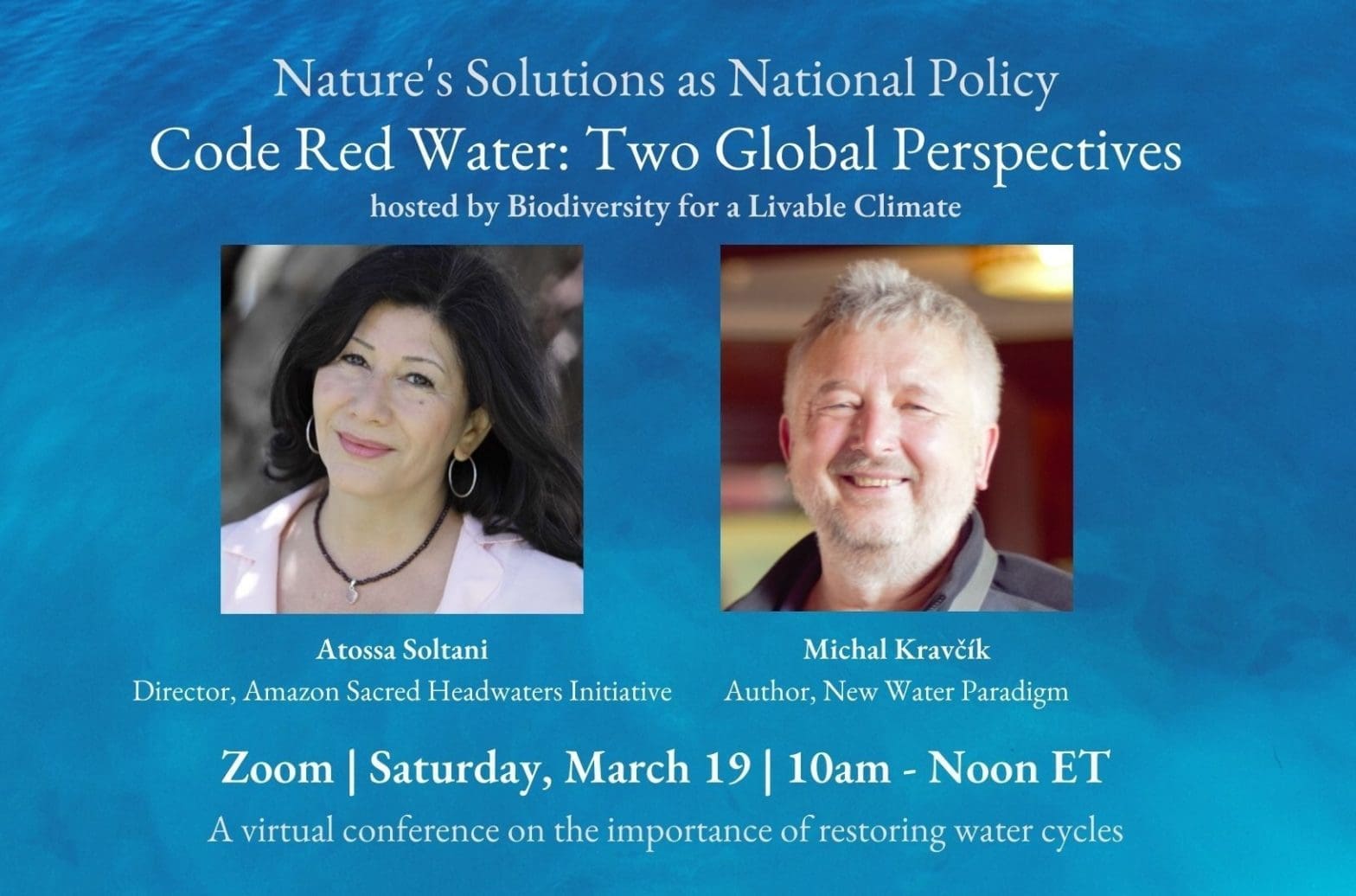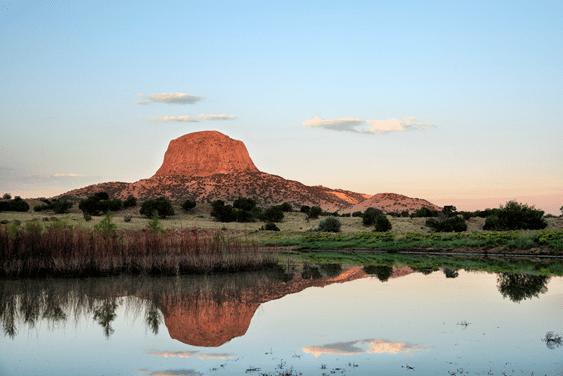This March, we held the latest installment in our Nature’s Solutions as National Policy conference series, Code Red Water: Two Global Perspectives. Atossa Soltani and Michal Kravcik discussed how improved water management can support functioning water cycles to meet the needs of living systems and cool the planet. Watch the recording here!
Tag: ERAwatercycles
Our Underrated Climate Ally: The Small Water Cycle
Cabezon Peak after rain, Photo by John Fowler (CC BY 2.0) Although climate change is a global issue, it can and must be addressed locally. Our overall climate is shifting drastically, but local climates are also changing, and they don’t always get the same amount of attention. Local climates change when the environment is drastically…
Nature’s Solutions as National Policy with Walter Jehne, Vijay Kumar & Rep. Chellie Pingree
A panel discussion among Walter Jehne, Climate and Soil Scientist; Vijay Kumar, government advisor for the Andhra Pradesh Community Managed Natural Farming Movement; and Chellie Pingree, Congresswoman from Maine and organic farmer. A remarkable look at the potential future of farming. This discussion took place June 5, 2021 and is the first installment in a…
Soak Up the Rain with Jan Lambert
This workshop follows Jan’s talk: Soak Up the Rain! What We Can All Do to Reduce Drought, Floods, Heat Waves and Severe Storms Jan Lambert: environmental writer and editor of The Valley Green Journal Learn more about Biodiversity for a Livable Climate: https://bio4climate.org/ Connect with usFacebook: https://www.facebook.com/bio4climateTwitter: https://twitter.com/bio4climateInstagram: https://www.instagram.com/bio4climate/ Presented at Blessed Unrest conference via…
Soak Up the Rain! What We Can Do to Reduce Drought, Floods, Heat Waves & Severe Storms: Jan Lambert
Did you ever stop to think about what happens with all the water that goes down the storm drains in your town or city every time it rains? Jan Lambert, even though a lifelong nature advocate, never gave that question much thought until 2014, when as an environmental journalist she learned about the profound and…
The Soil Carbon Sponge, Climate Solutions and Healthy Water Cycles with Walter Jehne
Biodiversity for a Livable Climate presents a talk by Walter Jehne, Australian climate scientist and soil microbiologist who is the Director of Healthy Soils Australia. Introduction by Didi Pershouse, The Center for Sustainable Medicine Presented on April 26, 2018 at Harvard University Learn more about Biodiversity for a Livable Climate: https://bio4climate.org/ Connect with usFacebook: https://www.facebook.com/bio4climateTwitter:…
Water
With the rise of civilizations, humans began having significant impacts on bodies of water and the water cycle. The early “hydraulic civilizations” appeared along major rivers (Nile, Tigris-Euphrates, Indus, Yellow River and others), changed watercourses and built canals for agriculture and transportation. As populations and cities expanded, demand for food led to soil depletion while…
Adam Sacks: The New Water Paradigm
Learn more about Biodiversity for a Livable Climate: https://bio4climate.org/ Please donate to our ecosystem restoration work: https://bio4climate.org/donate/ Our conventional view of water for decades has been to send it out to the oceans as quickly as possible. A new water paradigm developed by Michal Kravcik and colleagues explains why it’s so important to keep water…
Dan Medina, Emily Landis & Claudio Ternieden: The Small Water Cycle as a Climate Tool
Learn more about Biodiversity for a Livable Climate: https://bio4climate.org/ Please donate to our ecosystem restoration work: https://bio4climate.org/donate/ Healthy soils and water cycles are closely intertwined. Opportunities abound to restore fresh and saltwater wetlands, and to manage urban, suburban and rural water flows in ways that help cool the planet. Nature has fascinating and powerful systems…
Dan Medina, Emily Landis, Claudio Ternieden: The Small Water Cycle as a Climate Tool Panel Q&A
Learn more about Biodiversity for a Livable Climate: https://bio4climate.org/ Please donate to our ecosystem restoration work: https://bio4climate.org/donate/ Healthy soils and water cycles are closely intertwined. Opportunities abound to restore fresh and saltwater wetlands, and to manage urban, suburban and rural water flows in ways that help cool the planet. Nature has fascinating and powerful systems…
Michal Kravick: The New Water Paradigm (with captions)
Learn more about Biodiversity for a Livable Climate: https://bio4climate.org/ Please donate to our ecosystem restoration work: https://bio4climate.org/donate/ To activate closed captioning, click the “CC” icon at the bottom right of the video screen. Michal Kravčík guides us through the concepts of the New Water Paradigm in greater detail, showing how water cycles can be supported…
Michal Kravcik: The New Water Reality (with captions)
Innovative Slovakian hydrologist Michal Kravčík gives an introduction to his New Water Paradigm and the critical importance of regional or “small” rainwater cycles. The result is a set of empowering ecological concepts that enable people everywhere to secure clean and adequate water, prevent floods and drought and moderate local climate, simply by harvesting rainfall. Since…
Restoring Water Cycles to Reverse Global Warming, Tufts 2015
Restoring Water Cycles toReverse Global Warming Conference Home Program Speakers Sponsors/Partners Click here for videos and slideshows! Watch interviews with Michal Kravcik, Jon Griggs,Precious Phiri and Adam Sacks on Emerald Planet TV . . . . . . and one with Jim Laurie too! Even with elevated greenhouse gases in the atmosphere,water can cool the biosphere and…













